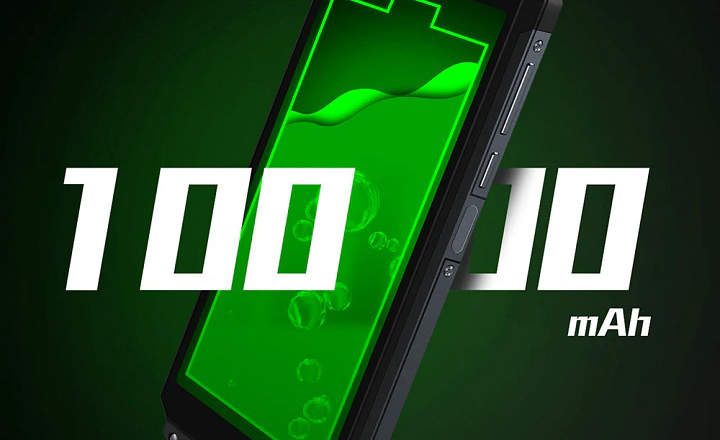
People are talking less and less about hearing loss related to the use of headphones. However, that does not mean that they cannot pose a serious problem for our hearing. How much volume is "a lot of volume"? And most importantly, how can we protect ourselves and at the same time continue to enjoy good music?
The threshold for hearing damage is 85 dB
Most experts agree that the limit to which we can suffer serious hearing damage it is around 85 decibels. After prolonged exposure to sounds of 85 dB, we will most likely start to suffer from some hearing loss or tinnitus.
And as much as 85 dB seems to us, the truth is that it is a volume to which we are continuously exposed in our day to day life. Lawn mowers or crowded restaurants easily put out around 90 dB or even more.
But don't worry, dining in a crowded restaurant is not going to leave you deaf. ENT specialists clarify that the human ear can endure up to 8 hours of exposure at 85 dB volumes.

What happens then when we exceed the 85 decibel limit?
When listening to music, the maximum volume limit that we can listen to is limited by the combination of headphones and sound source. Fortunately or unfortunately, most combinations of headphones, cell phones, amplifiers and players are capable of exceeding the 85 dB barrier.
Some helmets can even go up to 110 or 120 decibels. At this power level, our ears are only capable of holding a long exposure of no more than 60 seconds, before suffering really serious damage.
As we can see, the tolerance to the volume it is not something we can measure linearly. Thus, with sounds of 90 dB, 4 hours of exposure is more than enough to experience hearing loss. If we go up to 95 dB, our hearing will not last more than 2 hours. And if we raise the bar to 110 dB, our limit will be 1 minute and 29 seconds.
How can we measure the dB level of headphones?
At this point, we are surely wondering how we can know the decibels emitted by our headphones. The only thing we are clear about is that we do not want it to exceed 85 dB, but the bad news is that not something that can be easily measured.
Most decibel meters are designed to calculate the volume of an environment or open space, such as a restaurant, building, or park. But the sound coming out of headphones is projected directly into our ear, not into a room. Therefore, we can put the meter directly against the headphones, although yes, we will only obtain an approximate result.
Also, unless we already have it at home, who would spend 20 euros on a decibel meter to get an "approximate result"? In this case, we could install an app like Sound Level Meter or Sound Analyzer, but the result would still be less accurate than that of an analog meter.

Realistically, if we are in doubt as to whether our headband headphones or in-ear headphones exceed 85 dB, they are most likely too loud. We may not be able to know exactly how much power we are absorbing, but paying a little more attention and readjusting our listening habits may be the best thing to do when it comes to finding a volume with which we feel comfortable.
Mark your own limit
One of the best ways to control the volume is to set a personal threshold. Find a volume level that makes you comfortable listening to music. That threshold can be half of the sound bar on the mobile, or a specific volume number if we have a digital scoreboard.
If we use streaming music apps we can also go to the settings and set volume limits. It is something that we can find in any music app today. In Spotify, for example, we just have to enter "Setting”And make sure that the tab“Normalize sound" it's activated.

Another factor that we must take into account is the auditory fatigue. The more music (or noise) we listen to, the more our hearing gets tired. As a consequence, the music seems to sound lower. And what do we do when the music is low? We turn up the volume, of course.
Turning up the volume when our ears are tired is a bad idea. If we find that we are turning up the volume during a session of good music, it is best that we take a couple of minutes of rest.
Focus on quality, not quantity
Most of the people who listen to music with the volume very high, it is because they want to appreciate all the details, not because they want their ears to bleed. Therefore, if we have headphones or headphones that sound terrible when the volume is low, perhaps we should think about improving our equipment.

In this sense, it is always better to opt for a headband headphonesas they tend to offer better quality sound than in-ear or “earbuds”. Currently, we can find true quality headphones starting at 100 euros. It is not a cheap accessory, but if we take good care of them they can last us several decades.
If we use the headphones in places with a lot of people or ambient noise, it is most likely that we also want headphones with sound cancellation. This kind of functionality works wonders in office environments and the like.
Finally, if we don't want to spend a fortune on pro headphones, remember that we can always equalize the sound of our music player to get a more detailed sound.
You have Telegram installed? Receive the best post of each day on our channel. Or if you prefer, find out everything from our Facebook page.
